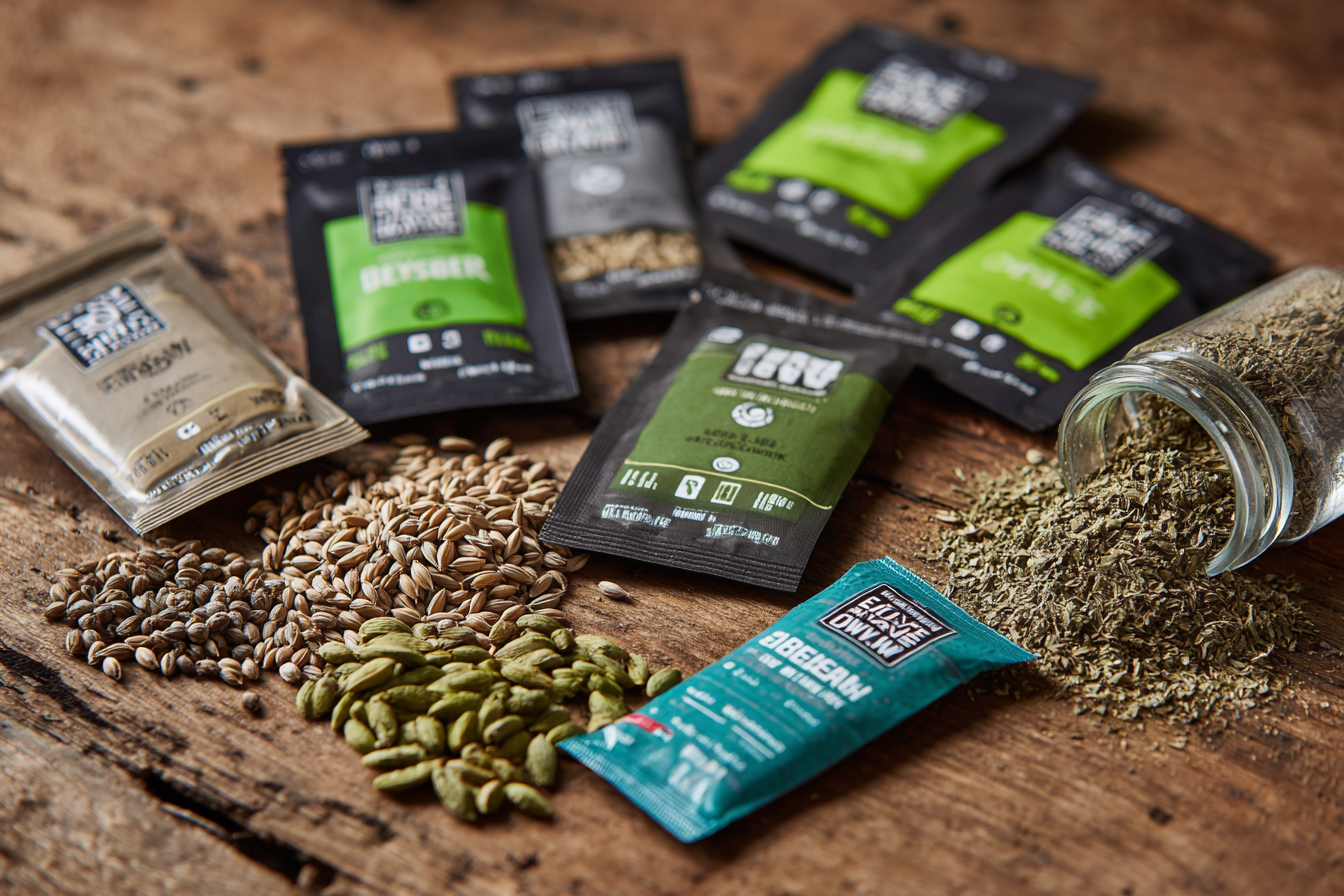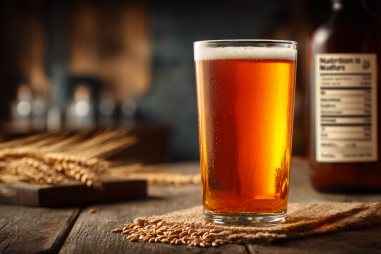Wheatwine beer is a bold, flavorful style that combines the rich malt profile of a barleywine with the bright, creamy character of wheat. The magic behind this distinctive style lies in its ingredients—the carefully chosen malts, hops, yeast, and other elements that give wheatwine its complexity and depth. Whether you’re an experienced homebrewer or simply curious about what goes into crafting a big, satisfying wheatwine, understanding these key ingredients is essential. Let’s dive into each component and explore what you need to create a memorable brew.
The Role of Wheat Malt versus Barley Malt
At the heart of any wheatwine are the grains. Unlike traditional barleywines that rely almost exclusively on barley malt, wheatwine incorporates a significant portion of wheat malt. This substitution has a profound effect on the final product. Wheat malt contributes a softer, creamier body and a fuller mouthfeel, balancing the intense alcohol warmth and sweet malt backbone typical of barleywines.
Barley malt provides the essential enzymes for fermentation and a strong source of fermentable sugars. It also imparts that characteristic biscuity, caramelized sweetness and the structural backbone necessary for aging. On the other hand, wheat malt adds protein content, which improves head retention and creates a slightly hazy appearance often welcomed in wheatwines.
Most wheatwine recipes feature anywhere from 30% to 50% wheat malt, with the remainder being various barley malts. Pale malt generally forms the malt base, while specialty malts like caramel or Munich malt can be added to enhance complexity, color, and flavor depth. Achieving the right balance between wheat and barley malt is crucial to maintaining both body and bright character in the beer.
Hop Varieties Suited for Wheatwine
Wheatwine is traditionally malt-forward, with hops playing a supporting, yet important role. The hop bitterness helps balance the rich malt sweetness, while hop aroma and flavor add complexity but must not overpower the malt character. Choosing the right hop varieties is key.
When selecting hops for wheatwine, consider classic English, American, or German varieties that offer moderate bitterness alongside aromatic qualities. Here are some popular choices:
- East Kent Goldings: Known for their floral and earthy notes, these hops provide subtle bitterness that complements malt sweetness perfectly.
- Fuggle: Another English hop that contributes mild herbal and woody flavors.
- Cascade: A classic American hop with citrus and floral aroma that can brighten the beer without overwhelming it.
- Willamette: Offers gentle spiciness and floral aroma, ideal for nuanced hop character.
- German Hallertau or Tettnang: These noble hops bring delicate herbal and floral qualities, common in traditional wheat and malt-centered beers.
In most wheatwines, hop bitterness will range from moderate to moderately high (typically 40-70 IBUs) to balance the malt sweetness, while late additions or dry hopping provide aroma without detracting from the style’s malt complexity.
Yeast Strains and Their Impact on Flavor
Yeast is a vital ingredient that defines a wheatwine’s flavor, attenuation, and even mouthfeel. The yeast strain you choose strongly influences fermentable sugar conversion, esters, and phenolics, all of which affect aroma and taste.
The yeast strains commonly used in wheatwine brewing include:
- American Ale Yeast (e.g., Wyeast 1056 or White Labs WLP001): These clean fermenters highlight malt character while producing subtle fruity esters.
- English Ale Yeast (e.g., Wyeast 1098 or WLP002): Adds mild fruity and earthy notes, enhancing malt complexity and often used in traditional barleywines.
- Belgian Ale Yeasts (e.g., Wyeast 1388 or WLP530): If you want to experiment, these twist the flavor profile with spicy, fruity esters that meld wonderfully with wheat’s softness.
For wheatwine, yeast that can handle high alcohol environments is essential, given the style’s robust strength. A proper finish with clean attenuation ensures the beer is smooth, not cloying, and ready to age, further developing its character.
Water Profile Considerations
Water chemistry is often overlooked, but it plays an important role in brewing wheatwine. Because this style balances malt sweetness and hop bitterness, adjusting water minerals can tweak the flavor profile effectively.
Key considerations include:
- Carbonates: Moderate carbonate levels help balance malt sweetness but avoid excessive alkalinity which can make the beer taste harsh.
- Calcium: Supports yeast health and clarity; aim for 50-150 ppm.
- Sulfates and Chlorides: Increasing chloride enhances malt richness and fullness, while sulfates accentuate hop bitterness. For wheatwines, a moderate chloride to sulfate ratio (often chloride heavy) promotes that creamy, malty profile with balanced bitterness.
Using brewing salts such as calcium chloride and gypsum allows brewers to refine the water profile before mashing, optimizing enzyme activity and flavor development.
Optional Ingredients and Flavor Adjuncts
One of the joys of brewing wheatwine is experimenting with adjuncts that can elevate flavor or add unique twists. While the core ingredients define traditional wheatwine, adjuncts are a way to personalize the brew.
Common adjuncts include:
- Specialty Malts: Darker malts like crystal or chocolate can introduce caramel, toffee, and roasted notes, deepening complexity.
- Spices: Subtle additions like cinnamon, orange peel, or coriander can complement wheat character without overpowering the beer.
- Fruit: Dark fruits like cherries, figs, or raisins blend well with malt sweetness and warming alcohol.
- Oak Aging: Wood chips or barrels can add vanilla, toast, and tannins, ideal for long-aging wheatwines to develop nuanced flavors.
- Honey or Molasses: These adjunct sugars can add fermentable sugars and unique flavor layers, but must be used carefully to avoid imbalance.
Remember that each adjunct alters fermentation, sweetness, or bitterness, so it’s vital to test small batches and ensure the adjuncts harmonize with the beer’s core profile.
How Ingredient Balance Influences the Final Beer
Every ingredient in wheatwine brewing plays a role, and their interactions determine whether the finished beer tastes balanced, muddled, or brilliant. Malts establish the foundation with sweetness, body, and backbone. Wheat adds smoothness and creamy mouthfeel, while hops provide necessary bitterness and aroma to keep the beer lively.
Yeast determines the character of esters and phenols, as well as how dry the beer finishes. Water minerals subtly adjust the perception of malt or hops. Adjuncts introduce complexity or new flavor layers, but must be well-integrated.
Getting these elements to work in concert takes understanding and fine-tuning. For instance, too much wheat malt can make the body too slick or dense. Excessive hops can overshadow malt delicacy. A poorly chosen yeast might produce off-flavors or fail to clear properly. Likewise, the water profile can either sharpen the beer’s crispness or soften it too much.
Experienced brewers often approach wheatwine recipes with a clear vision of the desired end product, then adjust ingredients accordingly. Starting with tried-and-true malts and yeast, they tweak hop schedules and adjuncts to craft something unique yet grounded in style tradition.
Crafting Your Ideal Wheatwine Recipe
Brewing wheatwine is both an art and a science. Armed with knowledge of the essential ingredients, you’re ready to develop your own recipes that balance bold malt sweetness with the creamy smoothness of wheat. Focus on these key steps:
- Malt Selection: Use a solid pale barley malt base complemented by 30-50% wheat malt and add specialty malts for color and flavor depth.
- Hop Choice and Timing: Pick moderate bitterness hops like East Kent Goldings or Willamette, balancing bitterness and aroma with late additions or dry hopping.
- Yeast Strain: Choose a well-attenuating, alcohol-tolerant ale yeast that complements malt richness without overpowering.
- Water Adjustments: Tailor water chemistry to enhance malt body and keep bitterness clean yet present.
- Adjuncts (Optional): Experiment with spices, fruit, or oak cautiously, always keeping harmony in mind.
Patience is also essential, as wheatwines benefit from aging to let flavors meld and mellow. Proper fermentation temperature control and sanitation ensure a clean fermentation, highlighting the best qualities of your carefully selected ingredients.
With these essentials in hand, you’re well on your way to brewing a wheatwine that bursts with full, creamy flavor and warming complexity. Every batch is an exciting chance to explore this unique style and craft a beer that’s truly your own.







